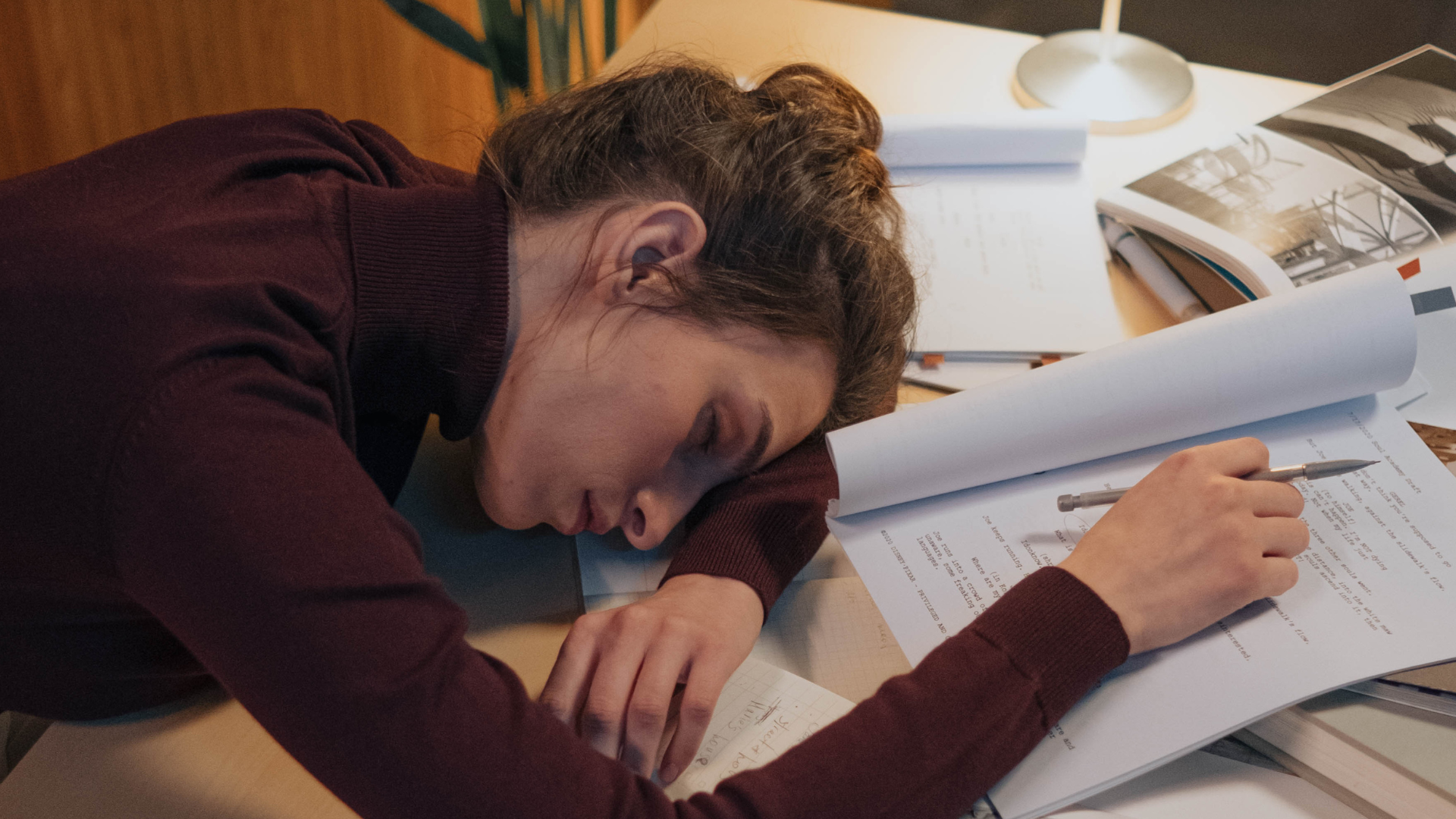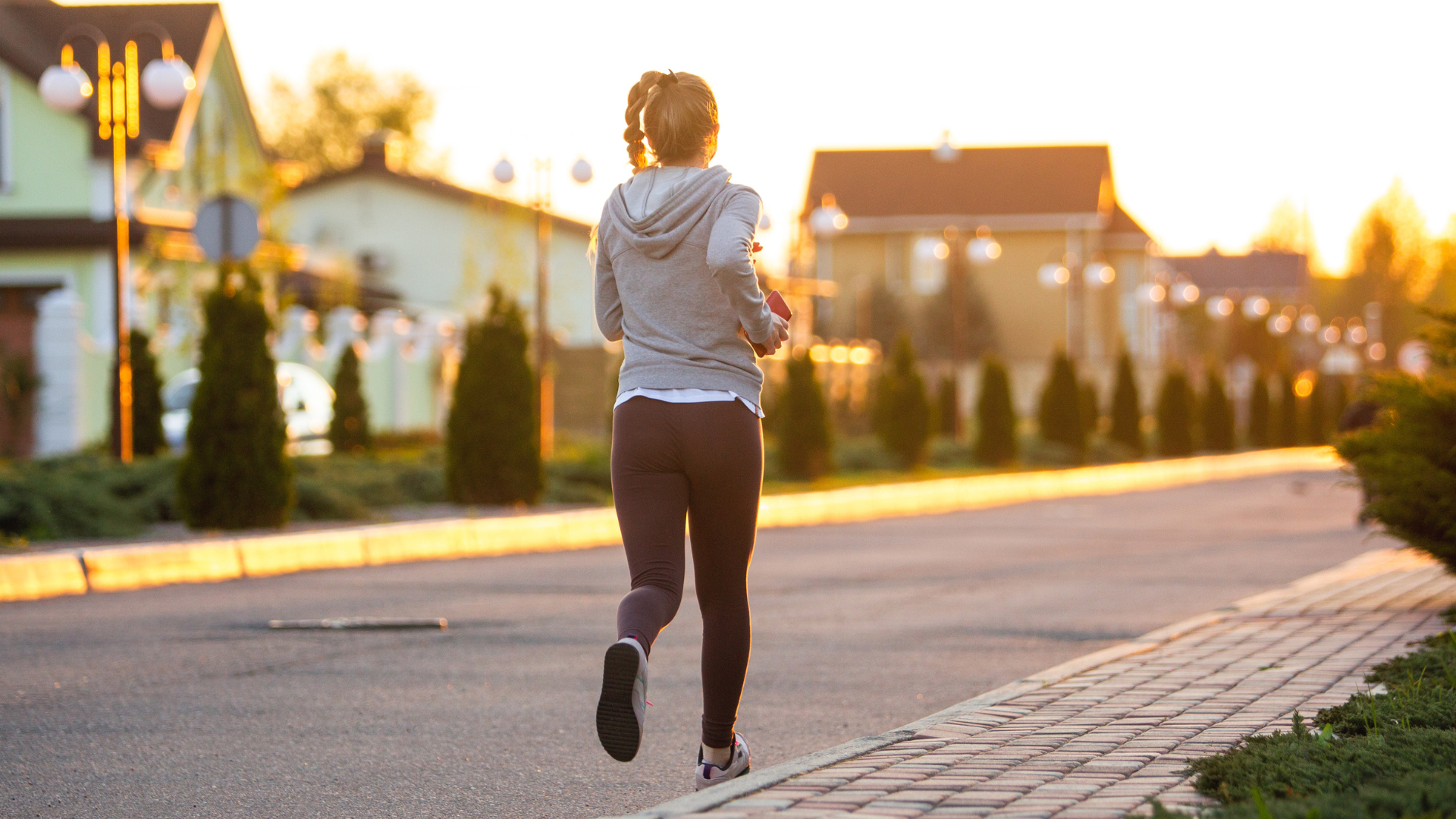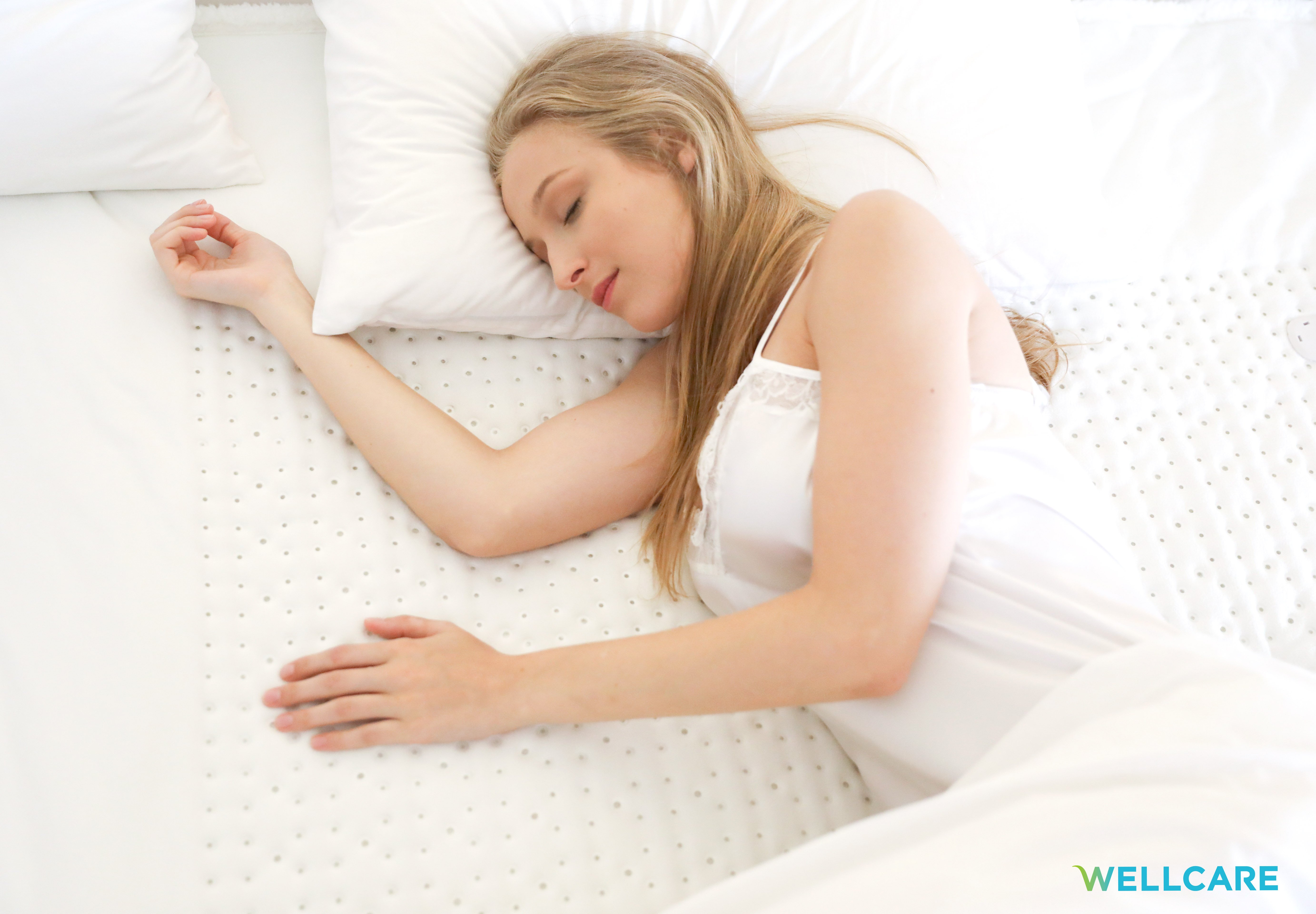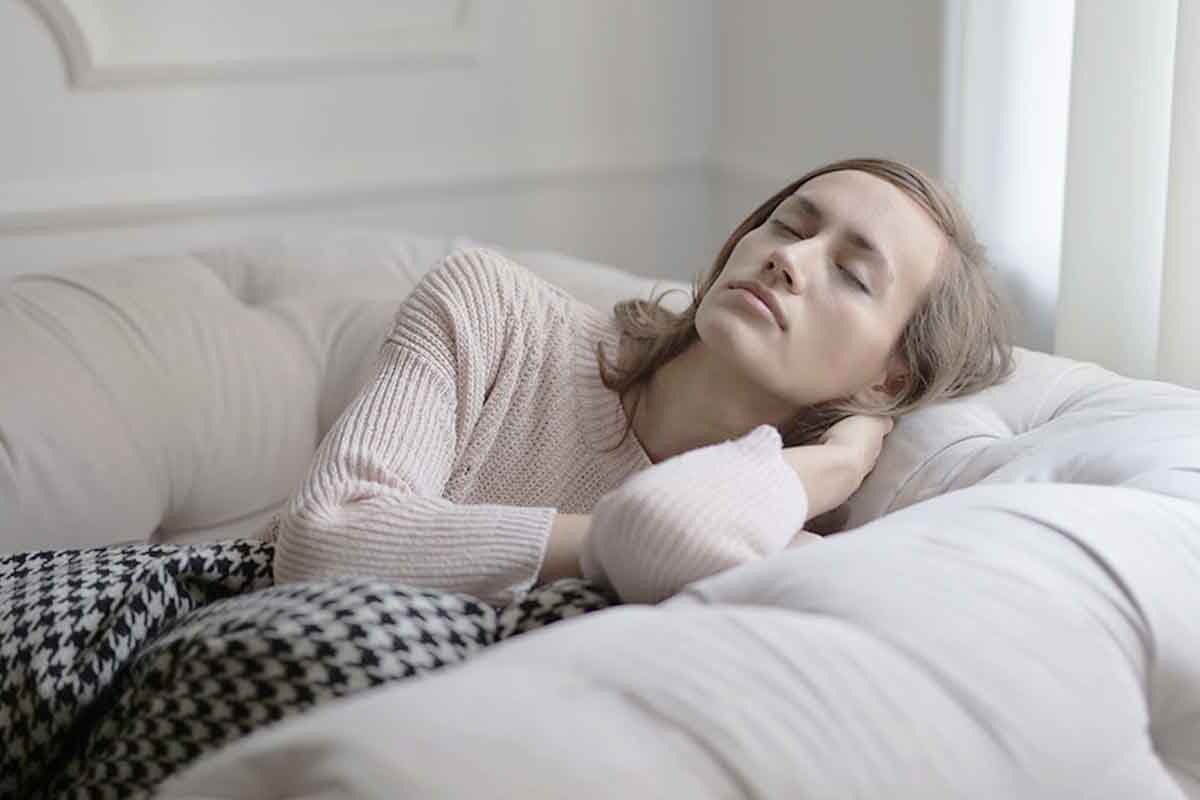Achieve mindful well-being and a rejuvenated body through a healthy sleep lifestyle. Unlock a healthy mind and body with Wellcare's sleep advice.
How long does it take to fall asleep?
The question posits, but why is it so important? According to Healthline, the average human being falls asleep sometime between 10 to 20 minutes. It is possible to fall asleep for a shorter period. However, the problem lies if you’re unable to fall asleep and can’t get enough hours of rest at night. If you struggle with falling asleep, there are underlying causes and factors to consider as to why that may be the case. Studies emphasise how sleep is essential for your body to maintain brain pathways that allow for cognitive function and physiological processes.
This includes learning, creating memories, concentrating and responding to stimuli. However, the science of sleep has remained a mystery in recent years, even with significant research and study.
Much study and research cannot stress the importance of sleep enough. Everyone needs it. Although the biological reason for sleep still evades scientific research and findings, recent ones show that sleep plays a vital role in discarding toxins found in the brain that build up when you’re awake.
Sleep affects the most primordial building blocks of our existence - cells. Every organ of the body depends on it for cell regeneration to occur. All bodily functions, organs, and life processes depend on how well one sleeps. Which includes the heart, liver, lungs, digestive system, immune function, mood and disease resistance. Studies also show that people subject to excessive sleep deprivation are at risk for diseases and disorders such as high blood pressure, diabetes, depression, and obesity.
Laura has suffered tremendous amounts of pressure from her job. People around her expect her to think and act a certain way. If she were to get a semblance of a night’s rest, it would only be for a few hours. She woke up in night sweats. She looked around her room; her laptop screen was blinking - her brain flickers. She thought, maybe if I start working on a couple of those copywriting tasks, I can get a good start in the morning. She then realised - it is the morning, 2am to be precise. She started working on her sheets but dozed off on her desk after some time. She dreams about her boss telling her to start working on the webinar scripts.

Laura began working but soon fell asleep at her desk.
Her alarm started blaring; the time incredulously announces that it was a quarter to 6 am. She scrambled to prepare for work that starts at 7 am. She went to her bed and rummaged through piles of paperwork and a few books she’s tried to read on nights she hoped to fall asleep. She jetted to the tub, anxious for the day ahead and the deadlines that cloud her mind. She clumsily poured a bottle of scentless liquid soap. She couldn’t think straight.
She dozed off in the bath when water started to seep into her nose and jolted her to wakefulness. She jumped into the shower to rinse off, put on a robe and made her way to her desk. Once there, she fumbled around, trying to make sense of the events. Before she could start her morning emails, she sipped a cup of tea. It’s stale; she managed to scorn herself in her head; she remembered it from the night before then. Ironically, she struggled to remember which email to check first.
Why Laura suffered from sleep debt
It has been weeks, and Laura has decided to consult a sleep specialist. On her first appointment, the doctor asked her a couple of questions, and she obligingly responded in-depth about her struggle to maintain sleep. The doctor muttered sleep debt while Laura tried to focus on his narration. He asked about her routine, schedule, and what she does before she prepares to sleep. She told him about her anxiety, the pressure from work she’s currently experiencing and how it has been causing her restlessness. The doctor looked at her intently and scribbled down a few notes. She tells him that she’s suffering from a mild case of anxiety and that she might be able to sleep better with just a few lifestyle changes and a prescription. He explained how long it takes to fall asleep - and why some people struggle with it.
Laura will start to change her behavioural patterns as prescribed by her sleep specialist in the coming weeks. She decided to limit her tea consumption throughout the day, exercise during the afternoon, and manage her tasks. She religiously consumed and followed her prescription. Laura saw the differences day by day. As weeks went by, she realised that she could find the first email to send out in the morning. It was from her boss, proud of her progress. It was a commendation on a task. He continued to ask her advice on how she’s been able to manage. He said that he, too, has been struggling with sleep health. She sent him her doctor’s information and rested before continuing to the next task. But before that, she started to write another email.

Laura goes for a walk in the afternoon.
She told her doctor that she recommended him to her boss, thanked her for explaining the importance of understanding sleep and sleep health and paid it forward by educating others as well.
The mechanisms behind sleep
Because sleep debt can negatively affect your health, there are different brain regions responsible for contributing to certain physiological processes that help you stay asleep. Different brain regions are responsible for maintaining and regulating sleep. Two internal physiological processes contribute to sleeping well. Circadian rhythm and homeostasis are equally important as these two processes control sleeping patterns: sleep-wake homeostasis and the circadian alerting system.
- Sleep-wake homeostasis - This process is the body’s self-regulating mechanism that builds up pressure relevant to how long you’ve been awake. Which explains why most people feel sleepier the longer they stay awake and the main reason why you sleep longer when you go through a more extended period without sleeping.
- Circadian alert system - A circadian rhythm lasts 24 hours and plays the most crucial role in the sleep cycle, among other physiological processes. Light exposure has the most significant influence on circadian rhythm as it motivates the person to stay awake during the day and causes sleepiness during the night.
How do chemicals and hormones affect sleep?
Certain hormones and chemicals affect the sleep cycle. Research has found that two mechanisms that regulate sleep change thousands of neurons in the brain that trigger the command centre (a signalling system) that brings about reactions in the body.
Although much has yet to be understood in terms of sleep, researchers have discovered some substances that appear to be much more critical to the machinery of sleep.
Such is the case in neurotransmitters which are responsible for signalling and regulating sleeping patterns. Melatonin, a hormone that is responsible for the control of the sleep-wake cycle, is naturally produced by the body’s pineal gland when light is reduced.
Other important hormones include adrenaline, cortisol, and norepinephrine. Just as this help regulate sleep, rest is pretty important to control their production. So one cannot go without the other. Other hormones vital to life processes include growth hormones such as leptin and ghrelin, which control suppression and repression of appetite. Food intake is also linked to the sleep cycle, as it is essential to developing healthy habits.
Diagnosis
To diagnose a sleeping problem, a healthcare provider may order a polysomnogram test. This procedure records breathing, oxygen levels, limb movements, heart rate and brain waves throughout the night. At night, sleep can be audio recorded. All the collected data can help a sleep expert determine if you are meeting the recommended number of hours of sleep per night or if your sleep cycle is maintaining normal rhythms through each sleep stage. The results will determine if you require further testing or a treatment plan.
How does the brain control sleep?
The brain plays an essential role in sleep. Several structures within the brain have specific functions. We must understand the central role that the brain plays in the sleep-wake cycle, as it helps us grasp how much rest our body needs. Sleep is essential to keep our immune system strong to ward off bacteria and possible viruses that can cause disease. The brain is considered the command centre of the body. Here are some structures of the brain that are responsible for processes that carry out sleep.
- The hypothalamus - As small as a peanut, the hypothalamus is located deep within the brain. It contains thousands of nerve cells that control sleep and arousal. Within it is the suprachiasmatic nucleus or the SCN, clusters of cells that receive information about light exposure that the light gets and control behavioural rhythms. Some people who sustained damage to their SCN have irregular sleeping patterns throughout the day as they cannot maintain their circadian rhythms parallel to the light-dark cycle. However, some blind people can keep their ability to light sensitivity and therefore regulate their sleep or wake cycle.
- The pineal gland also plays an important role, as it receives signals from the SCN and increases the production of the melatonin hormone. People who have lost their sight and can’t regulate their sleep cycles through light exposure can take a dose of melatonin during periods of restlessness.
- Basal forebrain - Located in the front and bottom of the brain, it is also responsible for promoting the sleep-wake cycle. Whereas part of the midbrain controls the centre for arousal. Adenosine, a chemical by-product of cellular energy consumption, is released by basal forebrain cells, supporting sleep drive. Caffeine counteracts sleeping; in the process of doing so, this can impede the potency of adenosine.
- The thalamus acts as a transmitter of sorts. It relays information to the cerebral cortex, a part of the brain that interprets and processes information from short to long term memory. In certain stages of sleep, the thalamus becomes quiet, letting the body filter out external noises and stimuli. HOWEVER, during REM sleep, the thalamus is active and sends cortex images, sounds, and other sensations that make up human dreams.
- Brain stem - Considered the brain's foundation, it transfers signals to the hypothalamus to communicate control transitions responsible for wake and sleep behaviour. The brain stem consists of the pons, medulla, and midbrain parts. The brainstem and hypothalamus have substantial sleep-promoting cells that propagate a brain chemical, GABA. This chemical helps reduce the arousal centres of the hypothalamus and brain. The brain stem, specifically the pons and medulla, are responsible for REM sleep cycles. These parts signal the muscles essential for an individual’s body posture and limb movements not to make sudden or various movements that might interrupt sleep.
10 Ways to Help You Sleep Faster
We’ve come up with specific tips for you to sleep faster, to get that much-needed rest to feel rejuvenated the next day. However, our tips do not replace a sleep specialist or health care provider’s prescribed treatment plan. These tips only aim to augment your plan or serve as a guide for managing sleeping patterns. These tips should always be treated as a way for self-care and not for long-term diagnosis or treatment. Always consult a healthcare provider to determine if a regimen works best for you. Here are some methods to try to help you sleep faster.
- Maintaining a specific sleep schedule and implementing it.
- Play soothing music to condition relaxation in preparation for rest at night.
- Limit the consumption of caffeine and nicotine.
- Exercise at least twenty to thirty minutes a day.
- Practice relaxation and breathing techniques to help you relax in preparation for sleep.
- Don’t lie in bed awake; if you can’t sleep, do another activity to tire yourself.
- Consult a sleep specialist if you have difficulty maintaining a sleep schedule or if you have trouble sleeping.
- Limit exposure to stimuli that can encourage arousal or disrupt sleeping patterns.
- At night, limit light entering the room or if you work during the day, use blinds or thick curtains to block out light from entering your room.
- Do not work right before going to sleep to condition the brain for rest.
Sleep Health Case Study: Daily Indications of Sleep Health in Normal Sleepers
There is significant evidence that suggests that women get less leisure time and less high quality and uninterrupted sleep. However, although studies show that women’s time use and sleep quality indicate that they have less time for sleep, a survey of employed parents of more minor children suggests otherwise. According to the survey, women sleep longer than men. There are other factors to consider where this information is applicable, such as whether or not these women have been part of a dual-income household with young children or midlife women. However, sleep health may be attributed to other reasons aside from gender-related behavioural sleep motivational factors.
According to another study, there has been developing and increasing data that support a correlation between sleep and health. Sleep is essential for cognitive, emotional and biological processes to function correctly. Recent studies are limited to the occurrence of disturbed or disordered sleep; the benefits of good sleep have yet to find emphasis. Or the practices to be adapted to establish good sleep health have not been given as much weight. Individual sleep characteristics do not exist in a vacuum.
Instead, the plan is to look at sleep health as multidimensional. Meaning, that rather than focusing on one aspect, there are many facets of sleep health that we can further investigate. Research emphasises the abnormal rather than practices used to promote sleep health. Such occurs because guidelines for determining “normal” or “typical” sleeping patterns are emergent ideas. Establishing what good sleep health constitutes has been somewhat challenging to identify. The National Sleep Health Foundation has recently developed a psychometrically tested measure of sleep health, the “Sleep Health Index”, - for use in large-scale studies. These dimensions have included the following:
- Sleep quality (six items),
- Sleep duration (three items), and
- Disordered sleep (three items).
The sleep quality dimension inquires into perceptive sleep quality - what individuals perceive as good sleep, feelings of rest, difficulties in sleeping or falling asleep, the negative impact of sleep deprivation, and unintentional dozing. In the sleep duration dimension, self-reported hours of sleep have been benchmarked and compared to NSF’s age-specific guidelines on sleep. In addition to this, measures of sleep deficit and sleep variability (for example, do respondents sleep more on working days or non-working days). Finally, the disordered sleep dimension provides guidance on using sleep medication, consultation with a health care provider, and whether a sleep-health provider formally diagnosed the patient and informed him of his condition.
Impressions
In the study, sleep health has been treated as a continuous and categorical variable. The study collected data from eighty-three participants aged 18-65 with no sleep disorders, chronic physical or psychiatric illnesses, or substance misuse. The study took a sample of respondents recruited from North England. The study has aimed to identify and assess how sleep health is related to subjective and objective factors.
Results
It is largely subjective in that it requires aspects of self-report through recording sleep latency (SL) using a sleep diary and objective through actigraphy sleep latency and in-lab polysomnography. Secondary analysis has also been conducted using standardised studies, psychometrics, actigraphy and in-lab PSG. Sleep latencies were derived from the sleep diary and actigraphy as significant predictors.
There has been a 28.2% sleep health variance. The decline in sleep health has been attributed to increasing sleep latency as the perceived primary indicator in normal sleepers. Most objective indicators such as PSG and actigraphy are not sensitive to sleep health status in normal sleepers. Research on physical and physiological factors that correlates to sleep health in larger samples is needed in the future.
What is Sleep Debt?
Also known as sleep deficit, sleep debt is the difference in the number of hours a person should be getting instead of the hours one lacks in sleep. An individual needs at least eight hours of sleep at night, but if he only gets five hours of sleep, he has a three-hour sleep debt. Sleep debt accumulates so that it can add up quickly in a few days. The most common activities contributing to sleep debt include work hours, socialising, and watching television.
Increasing sleep debt levels does not directly translate to the feeling of being tired. Research has shown that people can be cognitively adjusted to chronic sleep restriction. One can miss the feeling of tiredness, even when signs of sleep health decline, such as physical and mental performance regression.
According to a study in Krakow, Poland, recovery from sleep debt may requires a longer process. The study examined the recovery process from a long period of sleep depravity. Thirteen adult participants were interviewed in the study and were asked to track their sleep for three weeks, with 10 of those days being restricted from regular sleep. After the restriction period, participants were allowed to sleep for as long as they desired. In the final phases, gradual and complete recovery was observed when participants were allowed more hours of sleep. However, a cognitive functioning test showed that participants had a decreased rate of productivity and performance during the 10-day sleep depravity period. It was also observed that when participants could sleep as long as they wanted, there was a long recovery period.
Conclusion
Sleep is a life process that does not only affect our health but overall well-being. Being deprived of sleep has short-term and long-term effects and even leads to increased susceptibility to mortality. Although there has been no scientific finding that there is a direct correlation between the two, studies show the degenerative effects of sleep debt. It affects cognitive and even the most basic bodily functions. Sleep should be given much importance, and individuals should recognise the ill consequences of not getting enough sleep.
Getting better sleep at night is essential, and creating an environment for better sleep is even more essential. Getting a suitable bed climate is crucial and made easier with our 4D DWF Technology. With our warm electric blankets, get better quality sleep for better health because it’s the best form of self-care.

Laura’s life perpetually got better as she improved her sleep quality and lifestyle. Everyone deserves better sleep and a better life, like Laura.
Learn why sleep and health are correlated, and why it’s important to incorporate a healthy sleep schedule into your lifestyle. Achieve mindfulness and rejuvenated well-being with Wellcare’s sleep care tips. Read more on Wellcare health tips by visiting our blog here.


.png?width=512&name=united-kingdom%20(1).png)


